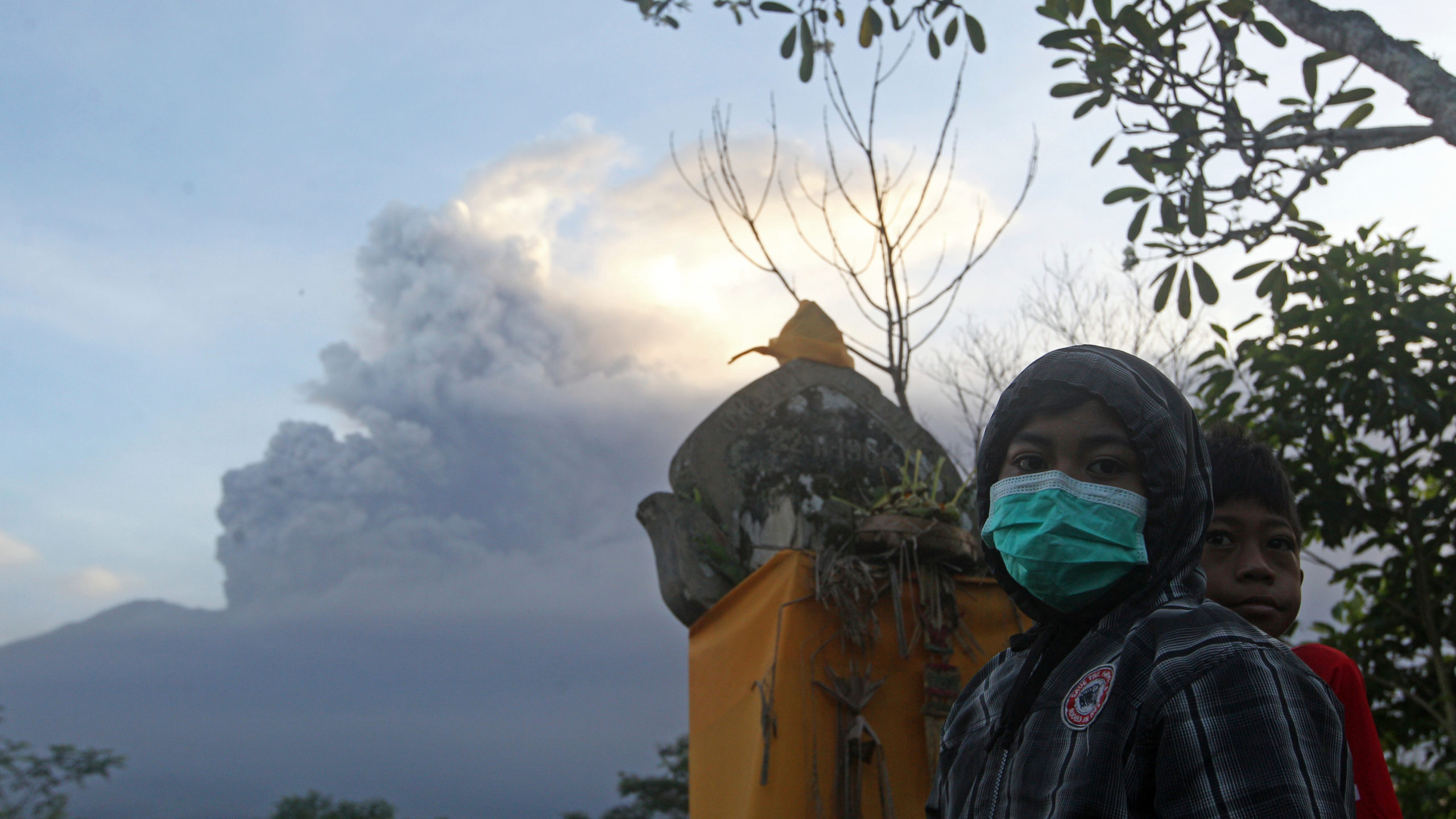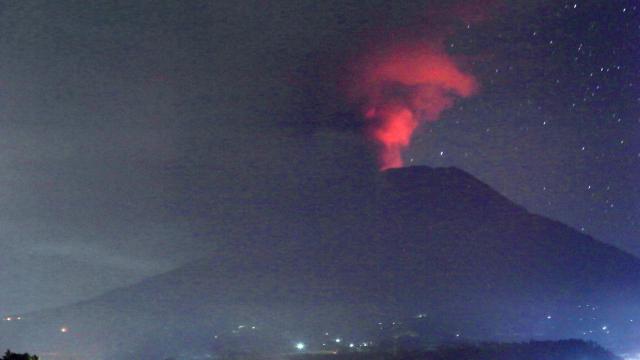Authorities evacuated tens of thousands of people from 224 points on the Indonesian island of Bali this weekend after the eruption of Mount Agung, which spewed gigantic clouds of potentially life-threatening ash into the atmosphere.
Up to 7,000 air passengers are stranded on the island at the main Bali airport of Ngurah Rai, while Indonesia’s Center for Volcanology and Geological Hazard Mitigation raised its aviation alert status from orange to its highest possible red status, signifying extreme hazards to aircraft. According to CNN, the Indonesian National Disaster Management Agency estimates the cloud was at least 4,000 meters tall, though the Australian Bureau of Meteorology later estimated a height of 7,600 meters.

Photo: AP
According to the BBC, increased volcanic activity this year sparked fears of an imminent full-scale eruption involving magma flows, costing “at least $US110m in tourism and productivity during the major evacuation.” Per NPR, volcanologist Gede Suantika told Reuters “The activity of Mount Agung has entered the magmatic eruption phase, it is still spewing ash at the moment, but we need to monitor and be cautious over the possibility of a strong, explosive eruption.”
The New York Times estimated about 75,000 people have been evacuated so far in total, while residents and visitors have been instructed to stay at least four miles away from the volcano. Government officials are insistent that the island remains safe for now outside of the area immediately surrounding Mount Agung.
The last recorded eruption of Mount Agung in 1963 happened to coincide with a Balinese Hindu ritual performed once every hundred years, according to Oregon State University. When the volcano began to erupt just days after the ritual, an estimated 50 million cubic meters of magma flowed from the peak. Pressure continued build until weeks later, when a massive explosion occurred:
The sub-plinian eruption was so strong, it was estimated that the top 100 m had been blown off, creating an eruption column almost 10 km high, which collapsed to form devastating pyroclastic flows. These pyroclastic flows travelled east and south at over 60 km/hr, wiping out several villages and causing the death of over 1000 people.
Many Balinese believed the eruption, and particularly the survival of the temple where the ritual was performed, was a bad omen.
However, according to Phys.org, while scientists believe Mount Agung will continue to smoke for up to a month or more, a similar eruption is not considered particularly likely now.
[CNN]
